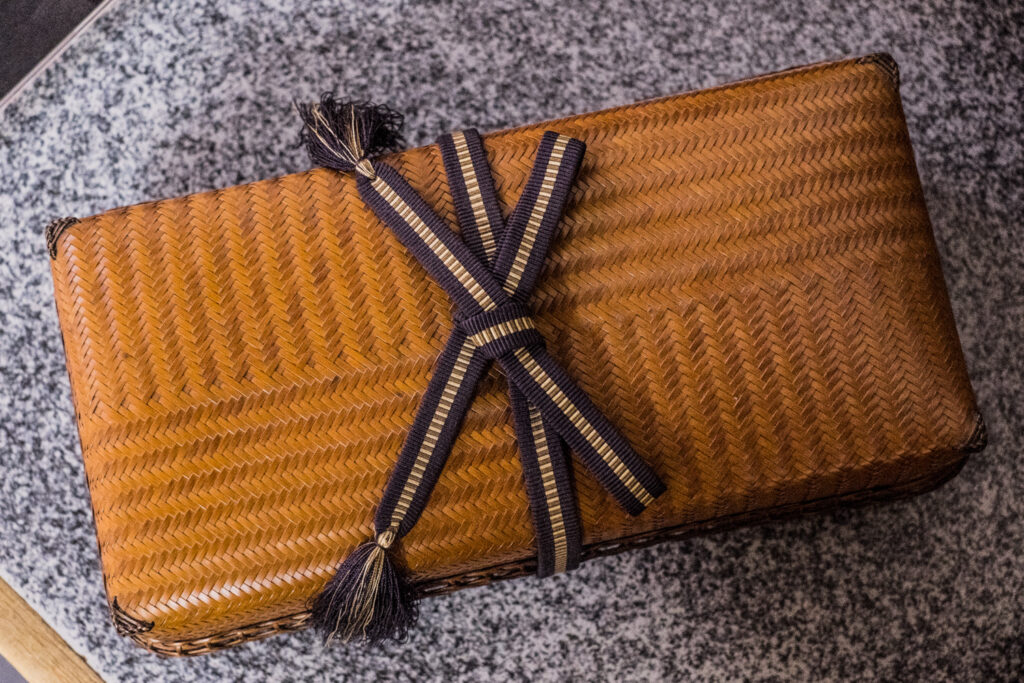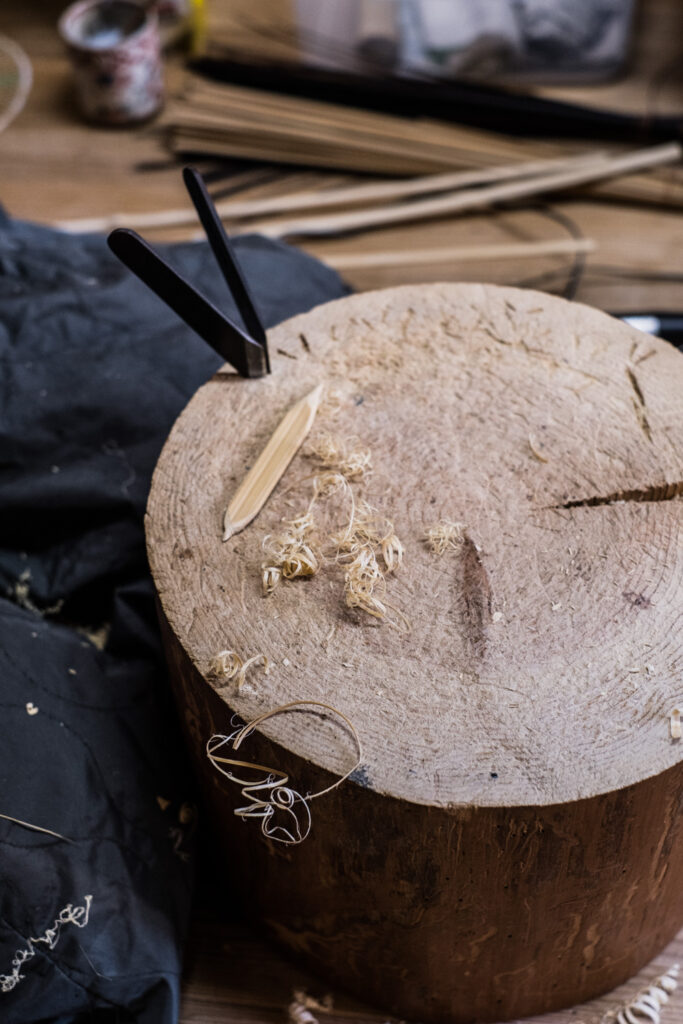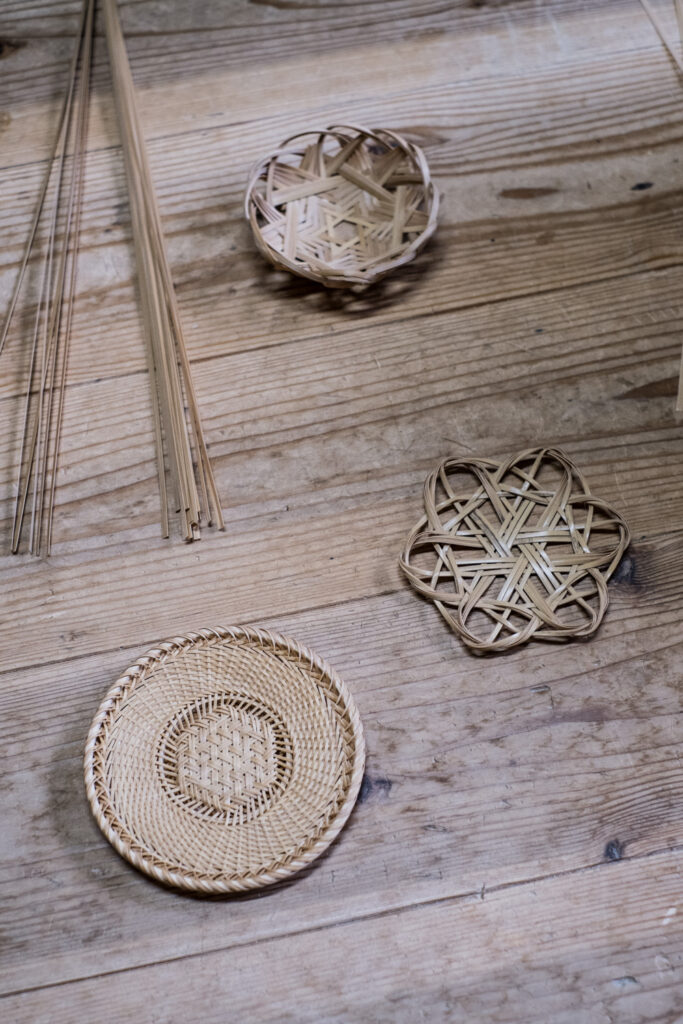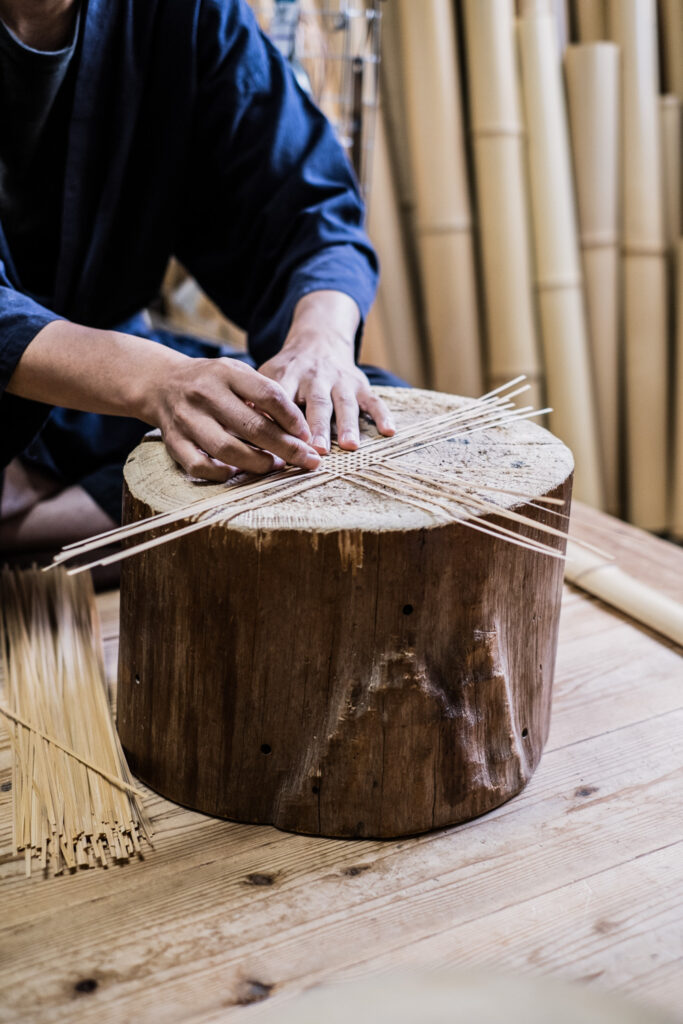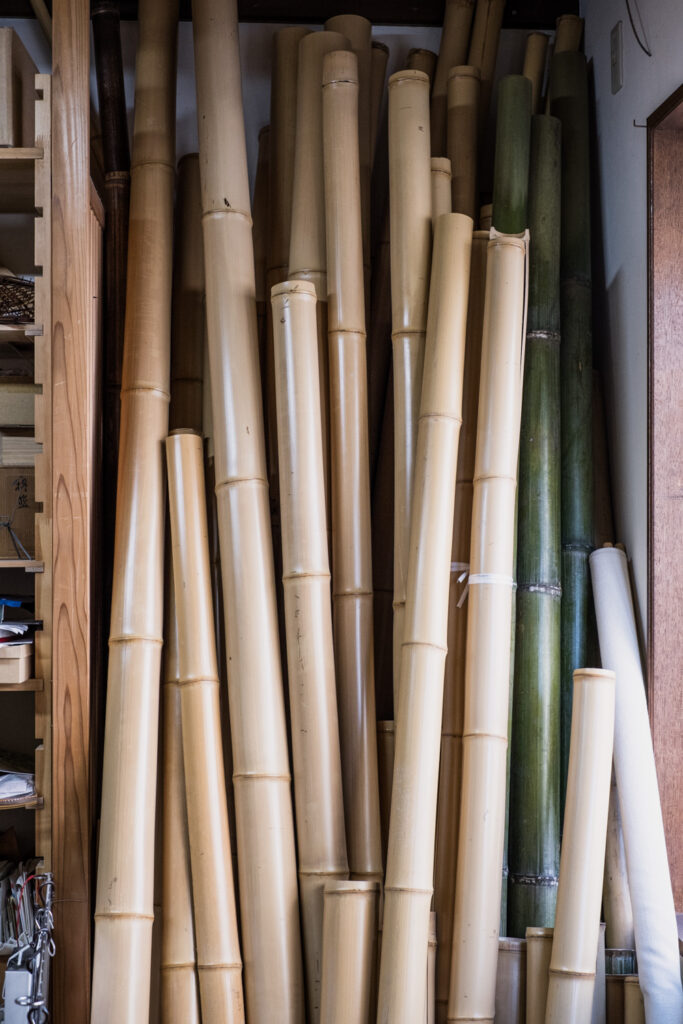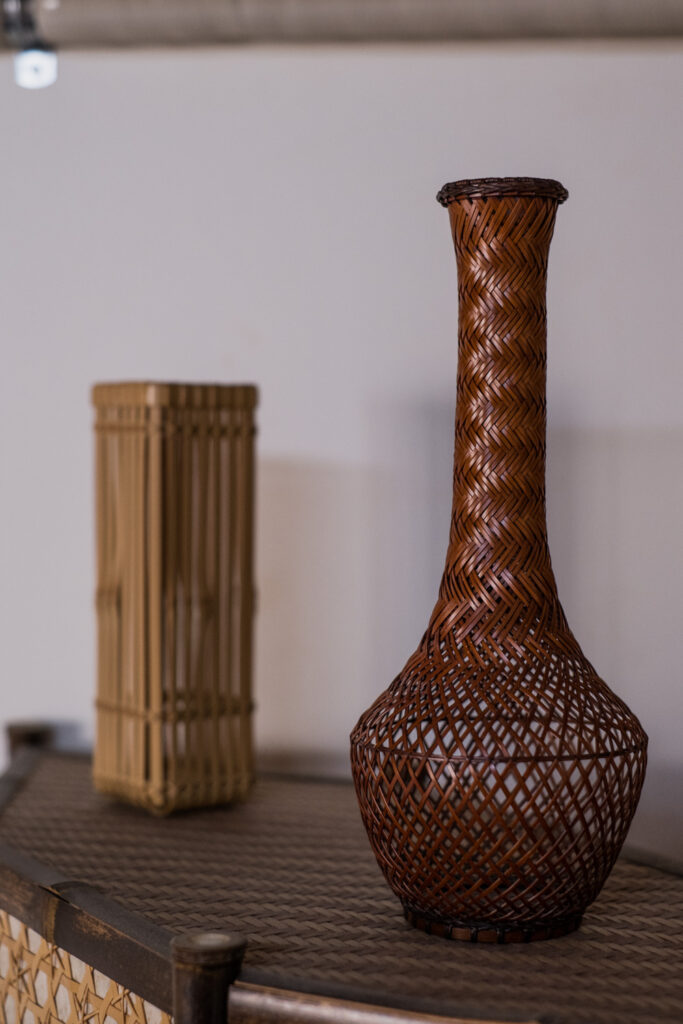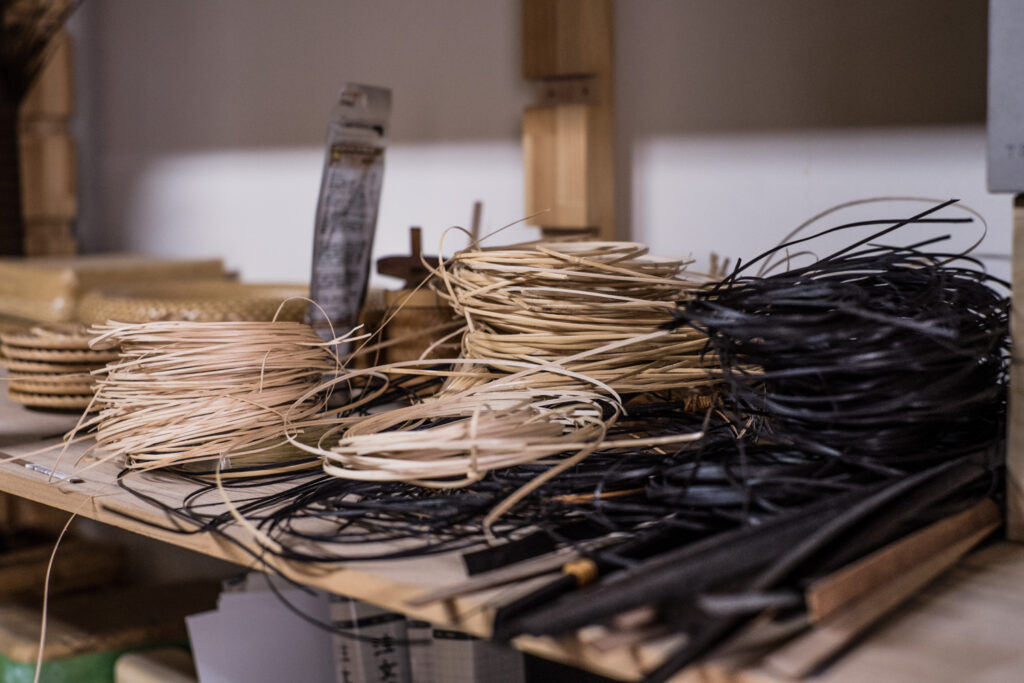Blog
Studio visit to Takekobo Kisetsu, a gem of Kyoto bamboo craftsmanship
2022/02/08
Today, we’re visiting one of our favourite craft ateliers. While most of Kyoto traditional craftsmen are pursuing their careers as next-generation artisans in the lineages of their fathers and grandfathers before them, Hideaki Hosokawa was working in Tokyo as an employee in a company before he decided to become a bamboo craftsman at the age of 30. Talk about a career change! It sure took him much courage and determination. He finished a 2-year intensive course at the Kyoto School of Traditional Crafts and opened his own bamboo weaving atelier Takekobo Kisetsu where he now works and lives with his wife and son.
Bamboo craftsmanship has been present in Kyoto since the city was founded in the 8th century, due to the abundance of raw material and inner qualities of bamboo, strength and flexibility. Hideaki Hosokawa specializes in bamboo basketry weaving techniques originally used for crafting tea ceremony and flower arrangement tools. Like many other Kyoto traditional crafts, bamboo weaving was becoming obsolete, mainly used in traditional cultural practices which are still going strong in Kyoto, but passing under the radar of those who don’t engage in them.
After experimenting and searching for new ways to re-introduce bamboo craft into our modern lifestyle, Hosokawa-san committed himself to producing practical and beautiful bamboo bags. He explains that splitting bamboo poles into thin strips for weaving is so tricky that it takes years to perfect. Looking at the large bamboo poles which were given their own corner in the atelier, it’s hard to believe that after a series of processes they will become intricately woven accessories. But we can imagine how satisfactory the transformation is if it’s made with your own hands.
In our next post, we will tell you more about Atelier Kisetsu and its fascinating products. Stay tuned!
Words & images by Anastasiya Bulkavets (ArigatoCreative.co)
